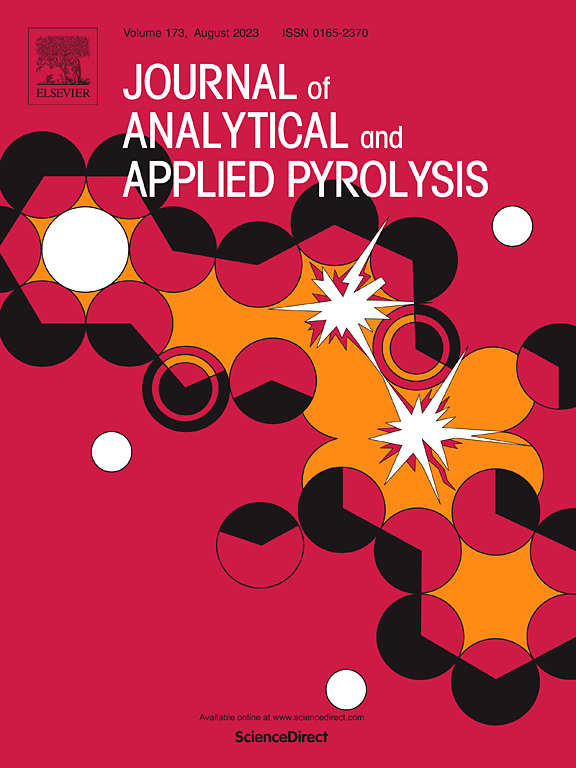Study on the biomass catalytic pyrolysis over hierarchically porous ZSM-5 catalyst derived from solid wastes by means of photoionization mass spectrometry
IF 5.8
2区 化学
Q1 CHEMISTRY, ANALYTICAL
引用次数: 0
Abstract
Catalytic fast pyrolysis (CFP) is one of the most efficient methods for directly converting biomass into green aromatics. Although ZSM-5 catalyst is efficient at producing aromatics, the catalyst deactivation brings challenge to industrial applications. Constructing additional mesoporous structure in ZSM-5 catalyst can overcome this drawback. In this study, two solid wastes are used as raw materials to synthesize hierarchically porous ZSM-5 catalyst based on solvent-free method, aligning with the target of “green chemistry”. Comparing with the commercial ZSM-5 catalyst, the synthesized catalyst achieves a higher BTX yield (benzene, toluene, and xylene), with increases of approximately 44 %, 7 %, and 12 %, respectively. The mesopore-to-micropore volume ratio is a key factor in determining catalytic efficiency. Moreover, PI-MS is used to monitor the deactivation behavior of catalyst online during the CFP process, showing that the synthesized catalyst has a slower deactivation rate. The hierarchically porous structure plays a crucial role in slowing the transformation of oxygenated coke into graphite-like coke, which is a major contributor to catalyst deactivation. This work can provide a green and convenient method for producing hierarchically porous ZSM-5 catalyst and be useful for improving the selectivity of aromatic compounds, offering a promising alternative to conventional ZSM-5 catalyst in industrial applications.
利用光电离质谱法研究固体废物衍生的ZSM-5级多孔催化剂催化热解生物质
催化快速热解(CFP)是将生物质直接转化为绿色芳烃的最有效方法之一。虽然 ZSM-5 催化剂能高效生产芳烃,但催化剂失活给工业应用带来了挑战。在 ZSM-5 催化剂中构建额外的介孔结构可以克服这一缺点。本研究以两种固体废弃物为原料,采用无溶剂法合成了分层多孔的 ZSM-5 催化剂,实现了 "绿色化学 "的目标。与商用 ZSM-5 催化剂相比,合成的催化剂获得了更高的 BTX(苯、甲苯和二甲苯)产率,分别提高了约 44%、7% 和 12%。中孔与微孔的体积比是决定催化效率的关键因素。此外,PI-MS 被用于在线监测 CFP 过程中催化剂的失活行为,结果表明合成催化剂的失活速率较慢。分层多孔结构在减缓含氧焦炭转化为石墨样焦炭的过程中发挥了关键作用,而石墨样焦炭是导致催化剂失活的主要原因。这项工作为生产分层多孔 ZSM-5 催化剂提供了一种绿色、便捷的方法,可用于提高芳香族化合物的选择性,是传统 ZSM-5 催化剂在工业应用中的一种有前途的替代品。
本文章由计算机程序翻译,如有差异,请以英文原文为准。
求助全文
约1分钟内获得全文
求助全文
来源期刊
CiteScore
9.10
自引率
11.70%
发文量
340
审稿时长
44 days
期刊介绍:
The Journal of Analytical and Applied Pyrolysis (JAAP) is devoted to the publication of papers dealing with innovative applications of pyrolysis processes, the characterization of products related to pyrolysis reactions, and investigations of reaction mechanism. To be considered by JAAP, a manuscript should present significant progress in these topics. The novelty must be satisfactorily argued in the cover letter. A manuscript with a cover letter to the editor not addressing the novelty is likely to be rejected without review.

 求助内容:
求助内容: 应助结果提醒方式:
应助结果提醒方式:


